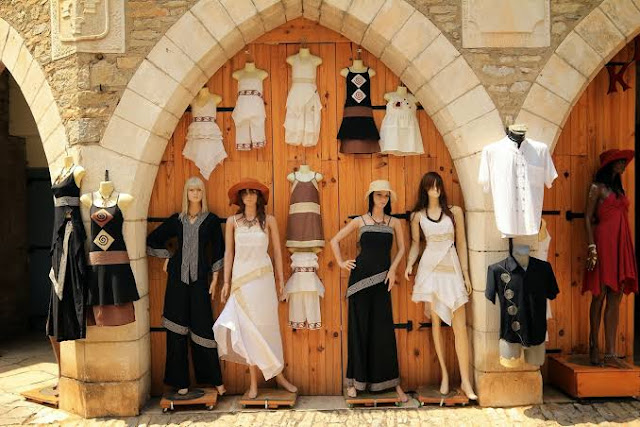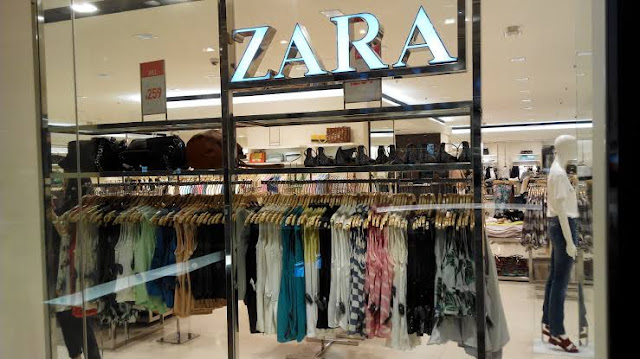How is it possible to get a cheap price for fashionable clothing?
Fashionable Clothing
Worldwide, now the prices of textiles are decreasing while demand is increasing but they all have a huge human and environmental value.
You remember the time when new clothes were made just for the family's wedding or for the Eid.
Most of us now buy clothes without waiting for a special occasion, and the reason for this is the amazing drop in the cost of many garments.
For example, the BBC's economic reporter Darshani David points out that British people now buy clothes five times more than in the 1980s.
Due to globalization, fabrics can now be manufactured at lower prices in remote areas, which leads to lower prices and increased variability.
But how is that possible? And how much do our shopping habits cost our environment?
A BBC Radio 4 investigative team traveled from Spain to Ethiopia to learn how our land and those with limited resources pay our insatiable thirst for fashion and us How to avoid
How does all this happen?
With the trend of bringing fashion trends on brands from the catwalk to the general public and the pressure to split profits among investors, a trade war begins to look for the cheapest sources.
The difficulties of some of our garment workers came to the world when 1138 garment workers lost their lives in the demolition of Bangladesh's Rana Plaza Textile Complex.
The pressure to improve the working conditions of these people increased and the result was better.
In view of the increasing global demand for transparency, many major retailers, such as H&M and Converse, have begun releasing lists of their suppliers and in some cases to their subcontractors (which can be thousands).
Are exploitation factories a thing of the past?
But the latest changes also had consequences that were not predicted. When workers' wages increased in Bangladesh, many companies moved to other countries to keep their costs down.
Workers at a factory near Addis Ababa City on condition of anonymity said salaries were too low to earn a living.
He also stated that working conditions, including dirty toilets and glam gloves, were unbearable.
The workers' rights consortium, a labor rights organization, condemned the situation. Many workers are not paid overtime, and in some cases, employers look at women laborers to see if they are pregnant, says Dr. Lupe Caritas.
Caritas says there has been very little progress since the report was released a few months ago.
To deal with competition from other countries, the Ethiopian government presents low wages as a positive thing.
But Caritas says the country's textile industry cannot be relieved of its responsibilities by justifying employment.
He says that the quit rate is high and people often leave government jobs and work in agriculture or other informal sectors.
And Sola de Castro founded the fashion revolution organization after the Rana Plaza tragedy. This organization is encouraging buyers to ask questions through a postcard campaign.
He says that there are two major misconceptions about sustainable systems and ethics. Firstly, 'fast fashion' is blamed, which gives the luxury sector a discount while the entire Ethiopian fashion industry has to raise questions. '
The second misconception is that locally made fabrics are ethical and environmentally friendly, while this is not the case.
What is its environmental value?
It is claimed that the textile industry produces more pollution from the aviation and shipping industry as a whole and consequently contributes more to climate change.The truth is that the manufacture, supply, delivery, sale, use, and throw of any outfit, each stage has its own negative consequences.
The first thing is the fabric used in the manufacture of garments. The problem is not which cotton and synthetic fabrics are better.
The problem is that cotton is a highly demanding crop. In a recent report from the British Commonwealth's Environmental Audit Committee, the manufacture of a shirt and jeans can require up to 20,000 liters of water.
The report concluded that 'we are using freshwater reservoirs in Central Asia without going unnoticed.
But on the other hand, the manufacture of a completely new plastic polyester shirt eliminates more carbon. Delivery of the product also eliminates carbon emissions, and dyeing the cloth creates further contamination.
In addition, the separation of underwater plastic microscope threads is also a major problem. Millions of such threads can be washed away by a single washing machine.
In addition, every year at least 1 million tonnes of garbage is dumped in the UK and 20% of them reach specific landfill sites for waste disposal.
But who is responsible for solving the problem?
What are the authorities doing?
The UK's Environmental Audit Committee has made 18 recommendations on the issue, including imposing additional taxes on products to run recycling centers, or whether the value-added tax (VAT) rate on clothing repairs. Downsizing, and sewing education in schools.But none of these recommendations have been implemented so far.
Critics say that if we take the sustainable fashion industry seriously, the policy should aim to convince us to buy less. This will require very stringent measures, which may include imposing an environmental tax on clothing.
But given the fragile state of the retail industry and the importance of a buyer-spending economy, it is difficult for any politician to propose this.
How much is the industry really making?
As consumer pressure increases, some retailers are busy trying to meet this challenge.Located just outside Spain's coastal city of Colonia, is the international headquarters of the company called Inditex. It may not be a familiar name to everyone, but its main fashion brand 'Zara' is a well-known name.
Started as a textile manufacturing small business, the company is now one of the largest retailers on earth. In addition, Zara changed our style of shopping and introduced fashion at fashion shows within just three weeks and at affordable prices.
Zara has recently committed to using 100% environmentally friendly fabrics by 2025. Obviously, this is not just Index but there are many other companies that want to improve their industrial and delivery stages.
Some big retailers are really taking action considering this issue, but the basis of this business model is 'untouchability', which is to persuade us to continually buy.
So is it the responsibility of the companies to convince us to buy less?
Pablo Esla of Zara says that it is not so. According to him, a retailer only cares about consumer desires and these buyers should have the freedom to choose.
What about buyers?
The London College of Fashion's emerging fashion designers says they will also go on a 'fashion strike' following protests against climate change at their doors, and vowed to spend money on fashion for months or even a year. I Will not do it.This practice is gaining popularity and more attention is now being paid to the purchase of fine clothing and the repair of old clothes.
For example, a designer has created costumes from Syrians used at several music festivals.
But that may not be enough. Now that the popularity of social influencers is increasing on social media, there are also growing concerns about the impact of their purchase on us.
One in every six personalities who have an influence on the public admitted that if they display a dress once on social media, they will not wear it again.
Environmental activist Livia Firth, along with her husband Colin, showcases eco-friendly clothing, including leather skins made from fish skins, on the red carpet.
They also urged their husbands to wear tuxedos made of recycled bottles. She says influential people have to change their thinking and say, 'If Kim Kardashian fosters an eco-friendly fashion, I might retire.'
She sees our relationship with fashion as an intoxication. And that might be true as it is predicted that worldwide shirts will increase by 500 billion in the next decade.
But the truth is that no one has found a solution so far.











No comments:
Thank you for your feedback.